SOUTH AFRICA AT A GLANCE
South Africa is a country on the southernmost tip of the African continent, marked by several distinct ecosystems. Inland safari destination Kruger National Park is populated by big game. The Western Cape offers beaches, lush Winelands around Stellenbosch and Paarl, craggy cliffs at the Cape of Good Hope, forest and lagoons along the Garden Route, and the city of Cape Town, beneath flat-topped Table Mountain.

BEST TIME TO GO
South Africa is a large and diverse country with a climate that varies from region to region. Generally, South Africa’s summer lasts from about December to March before winter takes over from June to August. Cape Town and the Western Cape experience winter rainfall and a largely dry, hot summer. Most of the rest of the country, including the Kruger Park area, have summer thundershowers and dry winter. The Garden Route and Eastern Cape can experience rain at any time of year.
Rainfall Short and sharp thunderstorms around Johannesburg, Kruger and KwaZulu-Natal Mostly in Cape Town and the Western Cape
The drier winter months (about May to October) are the best time for game viewing on a South Africa safari in the Kruger, Madikwe, Pilanesberg and KwaZulu-Natal. Animals are concentrated around water sources and are easier to spot in the thinned-out vegetation.
For a Cape Town beach holiday, you simply can’t beat the hot summer months between November and March. Note: if you want to visit the Mother City over Christmas or New Year, book your accommodation well in advance.
The KwaZulu-Natal coast has year-round sunshine, beautifully mild winter and warm ocean temperatures – so any time is a good time to go.
If you want to see whales along South Africa’s Whale Coast, then visit between June and November – numbers are usually at their highest in September.
WHY TRAVEL TO SOUTH AFRICA (TOP THINGS TO SEE)
KRUGER NATIONAL PARK
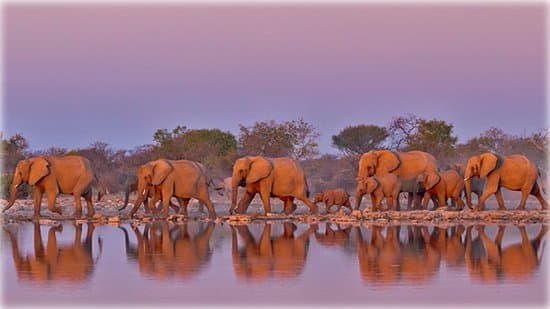
South Africa’s biggest and best-known national park is home to the country’s greatest diversity of wildlife. As one of the oldest conservation areas in Africa, it boasts healthy populations of wildlife and highly sought-after sightings of cheetah and wild dog. But the Kruger’s pièce de résistance is an almost guaranteed encounter with the super-celebrities of the safari circuit: Africa’s iconic Big 5. You can expect up-close sightings of elephant, buffalo, rhino, lion and leopard all year round. The Kruger is an unparalleled highlight of any South Africa safari. Hundreds of other mammals make their home here, as do diverse bird species such as vultures, eagles and storks. Mountains, bush plains and tropical forests are all part of the landscape. Steeped in legend and history, the iconic Kruger National Park in South Africa is waiting for you to explore its vast landscapes and spectacular African wildlife. It is the size of a small country.
Scenery
Kruger’s main habitat is woodland savannah, and the vegetation is relatively thick throughout, especially during the Wet season. The gently undulating landscape has its highest peak at Khandzalive (839m), in the southwest. Olifants Camp sitting high on a bluff overlooking the Olifants River is a scenic highlight with jaw-dropping views. Trees to look out for include the baobab in the tropical north and the striking yellow fever tree near water.
CAPETOWN
Cape Town is consistently voted as one of the top holiday destinations in the world for families, couples and solo travellers. South Africa’s Mother City boasts spectacular natural beauty, superb accommodation and fantastic weather year-round – and some of the best beaches in the world! The city’s acclaimed food and wine experiences are as alluring as its iconic landmark: Table Mountain, one of the 7 Natural Wonders of the World. And for some of the best land-based whale watching on the planet, head for the Whale Coast during whale season. The weather is notoriously fickle — it’s easy to experience four seasons in a day, and some residents keep a jacket, an umbrella and a bathing suit in their cars all the time, to prepare for any eventuality.
But that just reminds of the variety of things to do. If it’s too cloudy to hike on the mountain, then there’s art galleries, wineries and beaches. Swim with a penguin, burrow deep into the city’s history, or just walk along cobblestone streets and take it all in.
Recent water shortages may have tested the city’s resolve, but it’s still one of the planet’s
CAPE WINELANDS
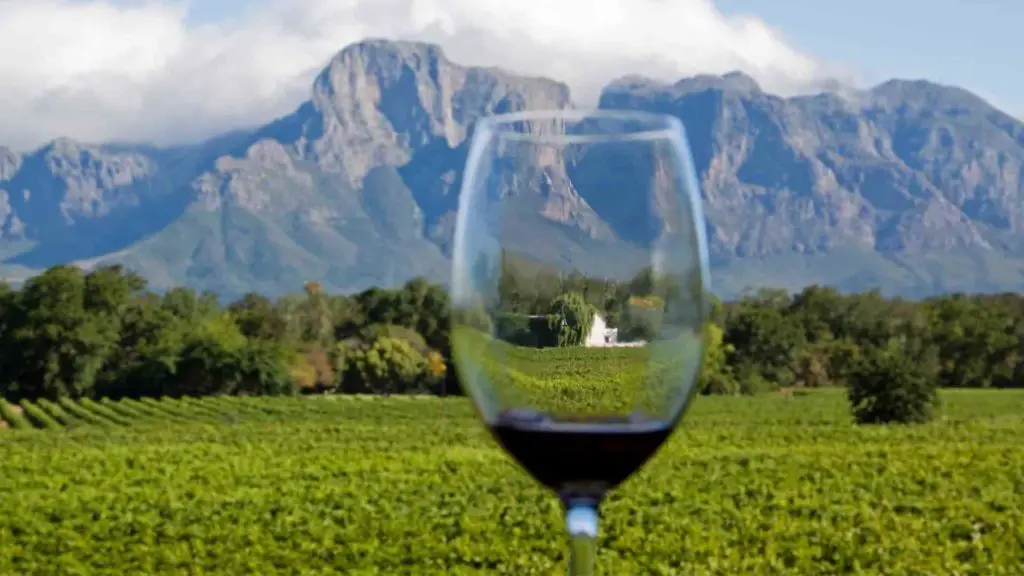
The beauty of the Cape Winelands’ green valleys ensconced by craggy mountains is as much of a treat for the eye as its cuisine is a treat for the palate. Sip, swirl and sample award-winning wines, indulge in gourmet farm-to-table cuisine or wander down oak-lined streets to local art galleries with this stunning scenery as your backdrop. Although only an hour’s drive from Cape Town, a night or two in this peaceful patchwork of vineyards and mountains will dissolve any lingering city stress.
GARDEN ROUTES
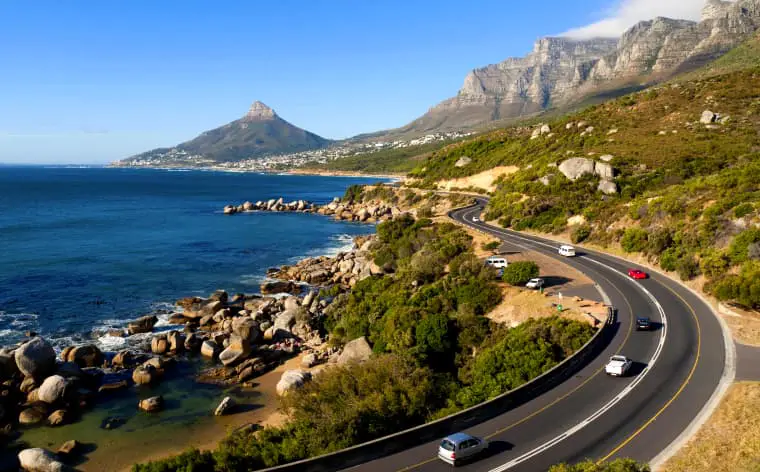
A firm favourite for a family holiday in South Africa, the world-famous Garden Route is a beautiful length of coastline that stretches from a couple of hours outside Cape Town to just after the seaside town of Plettenberg Bay. The ideal way to explore all the Garden Route’s sandy beaches, rocky shores, quaint towns and indigenous forests is to rent a car and drive yourself – although charter flights are available between destinations, if you don’t have the luxury of time. Don’t miss the picturesque town of Knysna, famous for its fresh oysters and sunset boat cruises.
Madikwe Game Reserve: South Africa’s Best-kept Secret
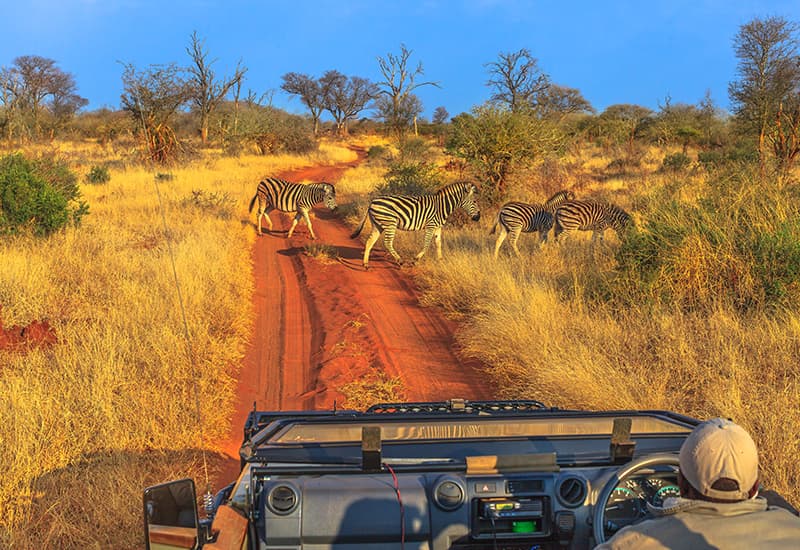
About a five-hour drive, or short charter flight, from Johannesburg, lies one of South Africa’s least known game reserves: Madikwe. Its Kalahari grasslands and woodlands are surprisingly full of animals, a haven for the Big 5 and endangered wild dog. Unique desert specialists like brown hyena and the rare aardwolf also thrive here. Madikwe offers fantastic family-friendly game viewing and exquisite safari lodges. A selection of romantic retreats and honeymoon suites also make it a great choice for couples.
KwaZulu-Natal: Big 5, Beaches and Historic Battlefields
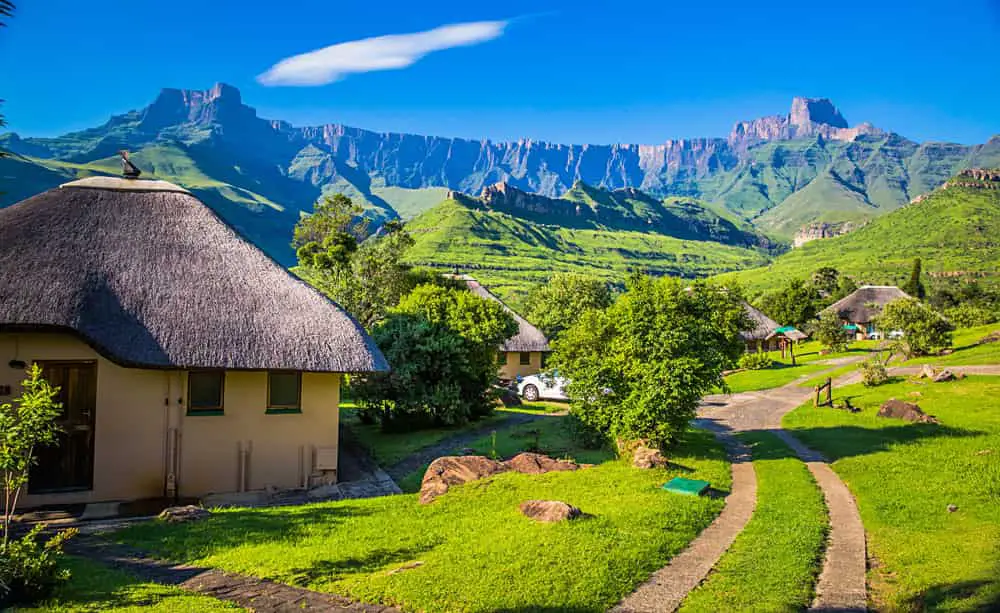
It’s often said that locals know best. When South Africans go on a vacation, their favourite choice is often KwaZulu-Natal (KZN). From the broad beaches of its sunny subtropical coast to historic battlefields among soaring mountain peaks and beautiful Big 5 game reserves, KZN is where to go in South Africa for some of the best bush-and-beach safari combinations.
Johannesburg: Place of Gold
In the past, visitors to South Africa whizzed through Johannesburg, stopping just long enough to catch their connecting flight. Nowadays, however, Johannesburg (or Jozi as it’s known to locals) is a destination in its own right. Boasting a fantastic selection of hotels and guest houses, a thriving café culture, budding restaurant scene and thrumming nightlife, Jozi offers its visitors a unique perspective of urban South Africa. Catch the ultra-modern Gautrain straight from the airport to the heart of Sandton; its shining shopping centres are filled with high-end boutiques. For greater insight into South Africa’s recent past, I recommend a visit to the Apartheid Museum. It’s a highly informative and moving experience.
Sun City: Africa’s Premier Holiday Resort
About three hours from Johannesburg lies Sun City, South Africa’s undisputed ‘Kingdom of Pleasure’. If you’re looking for true escapism and non-stop entertainment, then this is without question where to go in South Africa. There are championship golf courses and world-class casinos, slide-filled water theme parks plus nightclubs, shops and restaurants. They’ve even built their own beach! And if that’s not enough, Sun City is right next to the Pilanesberg National Park, where you can go on a Big 5 safari.
THE BEACHES IN SOUTH AFRICA
So, With the beautifully dynamic clash of the Atlantic and Indian oceans, South Africa’s 1,740-mile-long coast boasts some of the most stunning beaches in the world. With each one offering something different, there really is one for everyone – surfers, shark divers, horse riders, paragliders… The Cape in particular is a hugely popular destination for beach-goers all over the world, with its spectacular views and seaside towns. Just to mention but a few.
MILNERTON BEACH

Milnerton Beach is famous for the lighthouse that guides boats into the picturesque Table Bay.
Perfect for the snap-happy visitor, this beach boasts spectacular views of the mountain, dreamy sunsets and a palm-fringed lagoon.
Little Bay, Bloubergstrand – West Coast
Often described as the seafood haven of the West coast, Bloubergstrand (‘blue mountain beach’ in Afrikaans) is a suburb about 20 minutes from the city centre of Cape Town. Another scenic treasure trove, Bloubergstrand’s beaches not only provide mountain scenes, but also an excellent view of Cape Town itself.
Clifton 1-4 – Atlantic Seaboard
Referred to as the ‘French Riviera of South Africa’, Clifton beaches dazzle with its white sand and turquoise waters. Divided by granite boulders, the four beaches – namely First Beach, Second Beach, Third Beach and Fourth Beach – ensure visitors are really spoilt for choice when deciding where to swim or surf.
Camps Bay Beach – Atlantic Seaboard

Life in Camps Bay feels like an endless holiday that never gets tiring. With the mix of colourful pavement cafés and blazing beach days it is definitely worth a visit. Perfectly situated, Camps Bay is about 10 minutes from Cape Town city centre and Table Mountain and only 20 minutes from the V&A Waterfront. With plenty of things to do, this beach is ideal for active travellers.
Boulders Beach – False Bay
False Bay is a firm family favourite. Strewn with 540-million-year-old boulders, Boulders Beach is home to a population of 2,000 African Penguins, known as the ‘city slickers’, who have decided to unanimously take control of this particular bit of coast.
Llandudno Beach, Cape Town
Llandudno Beach is located in a little cove called Logies Bay, overlooked by the exclusive village of Llandudno. The beautiful, secluded beach is quieter than most Cape Town beaches, as it is accessed by only one road and there is minimal parking for visitors.
Lucien Beach, South Coast
Lucien Beach is located in the seaside resort town of Margate along the Hibiscus Coast, a region famed for its warm weather and coastal resorts.
Dolphin Beach, Jeffreys Bay

Jeffreys Bay, or J-Bay as the surf capital of South Africa, and one of the top-rated surfing destinations in the world. In July, J-Bay hosts the World Surf League event at Supertubes, a legendary surfing spot located 1.2 miles from Dolphin Beach.
CULTURE
The culture of South Africa is one of the most diverse in the world. The country boasts of an impressive eleven official languages and other several recognized languages, with each of the group having its own vibrancy and culture. A substantial majority of the South Africans still live in the rural areas where cultural traditions have survived.
Khoikhoi and San
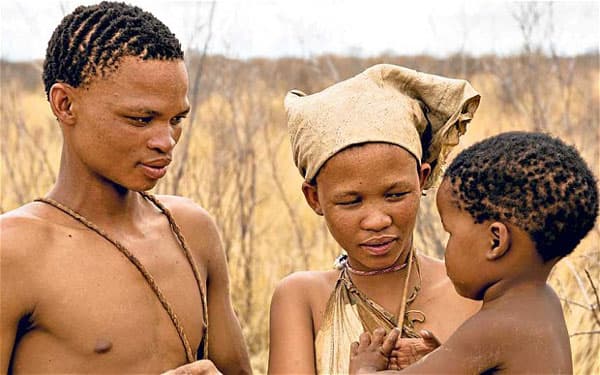
Khoikhoi and San were the original inhabitants of present-day South Africa. The KhoiSan were known as the “Bushmen” and were skilled hunters and trackers. Their tracking skills are still necessary for the fight against poachers. They are mainly nomads who live in desert regions of South Africa.
Zulus
The Zulus are known for their shield-bearing warriors under the leadership of Shaka. They are also famous for their beadworks, grass huts, and basketry. The belief of the Zulu people is based on ancestral spirits which appear mainly in dreams and a supreme being who is rarely involved in the activities of the mortal. Use of magic is common among the Zulus and any tragedy or illness is blamed on the evil spirit.
Xhosa
Xhosa culture is popular for the complex dressing that portrays a person’s social status, position in the society, and whether they are married or not. They also have a strong oral tradition with stories of ancestral heroes. Ancestral worship is a common practice and young men have to undergo a rite of passage. Stick fighting is a common sport among the Xhosa among the young men looking after the cattle. Women mainly tend the crops and look after the home.
Ndebele
Ndebele are known for skilled women who decorate their houses in beautiful geometric designs. The skills are hereditary and women are tasked with the responsibility of teaching their daughters. The shapes used in the decoration are inspired by their fashioned beadwork. Ndebele women are distinguished from other South African women by the neck rings and the striking traditional blankets.
Sotho
The culture of the Sotho people differs from those of the Ndebele, Xhosa, and Zulus in several ways, especially on how they organize their villages. The Sotho homes are organized into villages rather than scattered settlements. The villages are further organized into age-sets. Each of the age-set is given a specific responsibility and the age-set graduate from one responsibility to another. They also allow their sons to marry from their kin, especially from the maternal side. Their traditional folk art includes pottery making, beadwork, decoration of houses, and weaving.
SOUTH AFRICA CUISINE
Biltong & droewors
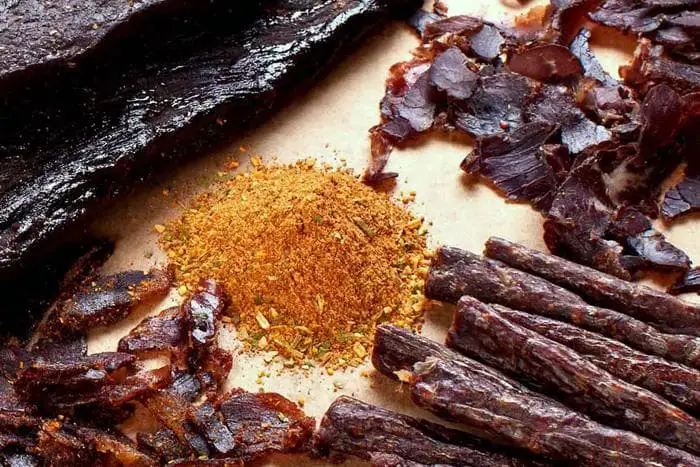
Dry curing was a method used to preserve meat by the indigenous tribes of South Africa before fridges were invented. Usually made from beef or game, such as springbok, biltong (a thinly sliced, air-dried meat) and droewors (an air-dried sausage) are traditionally eaten as snacks. The meat is cured in a mixture of vinegar, salt, sugar and spices such as coriander and pepper, then hung to dry. The finished product is prized by health enthusiasts for its high protein and low-fat content. Nowadays, biltong and droewors producers often add flavourings such as chilli or garlic to the meat and use a variety of meats, such as ostrich and wild boar.
BOERWORS
This is a traditional South African sausage made from beef, mixed with either pork or lamb and a mixture of spices. Boerewors are traditionally served in a coiled shape, similar to the Cumberland sausage and cooked on a braai (barbecue). The word boerewors comes from the Afrikaans and Dutch words Boer (farmer) and wors (sausage).
CAPE MALAY CURRY
In the 17th century, the Dutch and French landed and settled in Cape Town, bringing slaves from Indonesia, India and Malaysia, along with their spices and traditional cooking methods. When combined with local produce, the aromatic spices such as cinnamon, saffron, turmeric and chilli created fragrant curries and stews, which are still popular in the area today.
CHAKALAKA AND PAP
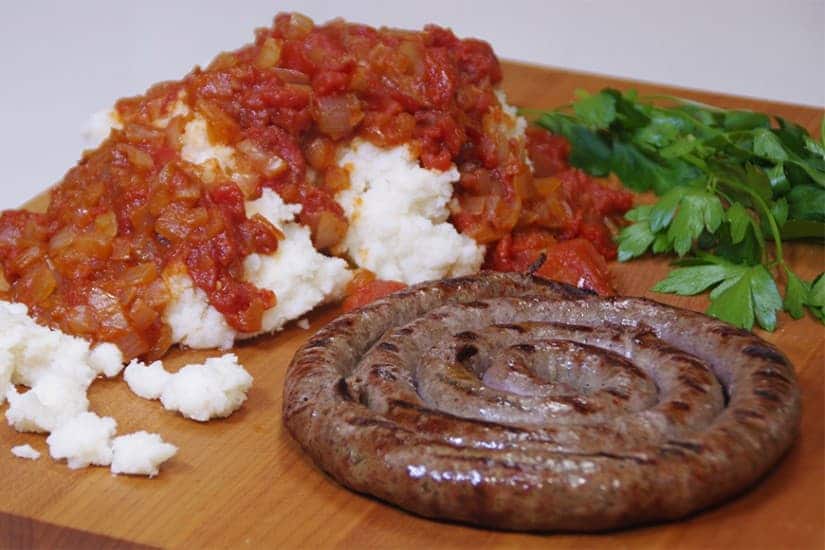
Chakalaka and pap are mainstays on every South African dinner table. Chakalaka is a vegetable dish made of onions, tomatoes, peppers, carrots, beans and spices, and is often served cold. Pap, meaning ‘porridge’, is similar to American grits and is a starchy dish made from white corn maize. Chakalaka and pap are often served together, along with braaied (barbecued) meat, breads, salad and stews.
WHAT TO PACK
Here’s a brief summary of the essentials for any South Africa packing list:
- ID documents (passport, driver’s license, visa)
- Money, credit cards
- Appropriate seasonal clothing and undergarments
- Bathing suit, sunscreen
- Sunglasses, hat
- Basic toiletries
- Cameras, batteries
- Laptop, cell phone, chargers
- Power outlet adapter
- Insect repellent
- Anti-malaria medication, if desired

